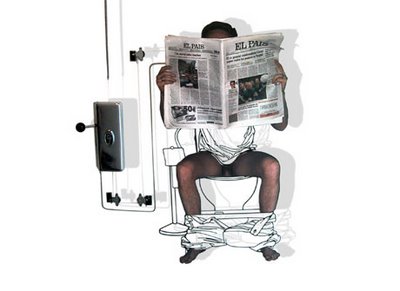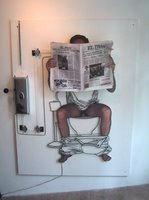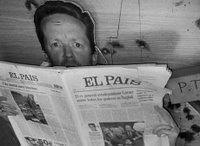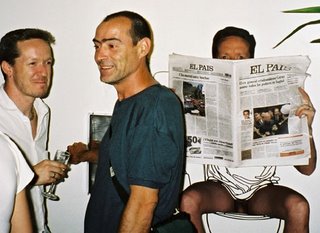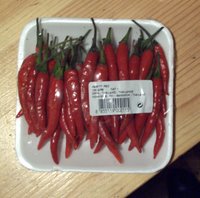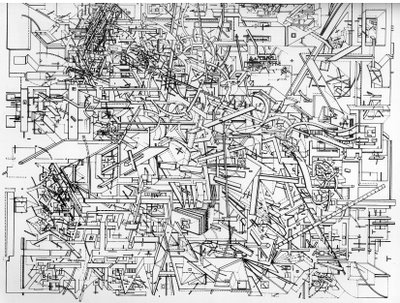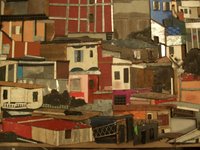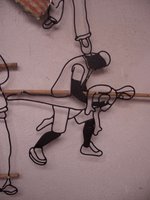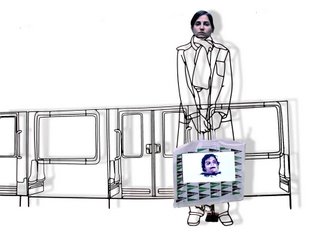
I like people. I also like observing people. I also like narratives! And Directing! So it was just a matter of time before I started working with a variety of these things in my work. In the past I have done some stuff like this, the first time being the piece that I did with Thomas Charveriat called
Passage, which is a about sharing common spaces, for a show at Cold Creation Gallery called Transhallucinogenic. For Passage I made small figures in steel bar and mixed them with photography not unlike some of the steel/photo combo work I had done in the past except this time adding a small video monitor. There was something about these small figures that fascinated and intrigued me which led to the work "WH(Y)" which you can see on this page under the entry of the same name. "WH(Y)" is a bit chaotic so I decided to see if I couldn't do something a bit less fantastic and capture the dynamic of any given moment, which is what led me to begin "The Accident".
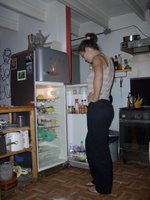
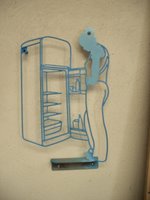
Perplexed, hmmmm.... shops are closed and very little in the fridge, what shall we do?
Small Figure with Fridge, Steel, 40cm, 2006
(Photo= Original Material)
First thing I also did after "WH(Y)" was create some free standing figures which I'm still not exactly sure what to do with but it will come to me then I will pass it on to you. The principal idea of these figures was to capture everyday moments like the one above which captures Jona Borrut, my principal muse of the last years, in that predicament that faces us all at some point in time or another perched in front of the refridgerator wondering what to eat. The great thing about working in this way with digital photography and then reproducing the figures is the ability to capture the body language.

"The Accident" otherwise known as "Tradgedy Strikes" in the studio before being installed.
I don't know when it hit me to recreate the scene of an accident, but i do know that it was in part inspired by Auguste Rodin's The Burghers of Calais, pictured below. I 'm fascinated by the tension present in the work. It tells the story of the elders of Calais as they had been given an ultimatum by English forces that had surrounded the city during the 100 years war. The English demanded that the burghers forfeit their lives in exchange for English leniency concerning the future of the city and it's population. As you can see it was a rough conversation and conveyed in a way that only Rodin was capable of.
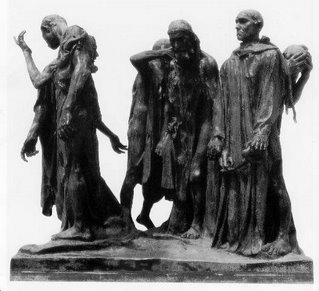
Auguste Rodin's The Burghers of Calais
1884-86 (30 Kb); Bronze, 82 1/2 x 95 x 78 in; Rodin Museum, Philadelphia
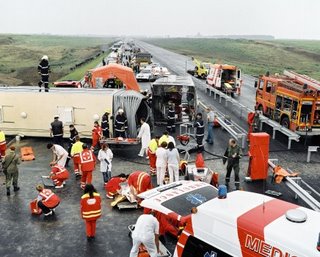
Aernout Mik, Refraction (2005).
Photographs: Florian Braun, Berlin
Also hats off to Aernout Mik for this doozie of a video installation depicting a bus accident which I find really inspiring. There's something about analyzing the scene of an accident and all the dynamics that are present and Mik captures that perfectly in this piece. It's also something I strove for in "The Accident".
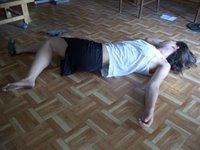
Or maybe it just started with her, my poor beseiged model. Yes Jona Borrut once again the protagonist of one of my pieces.

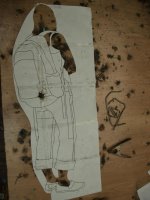
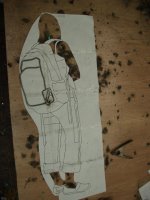
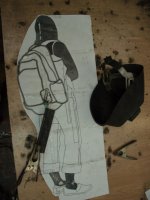
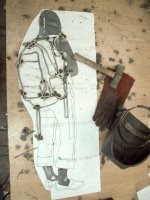
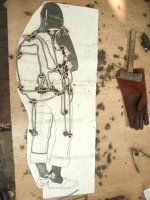


Walking you through the process of making the figure of a student of mine named Jannah Ledesma, she's from Manila and is a blossoming artist as well as interior designer. Sorry about the fluctuating white balance in the photos....
Some of the other original poses
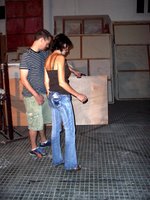
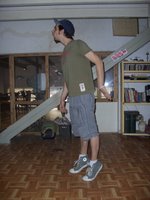
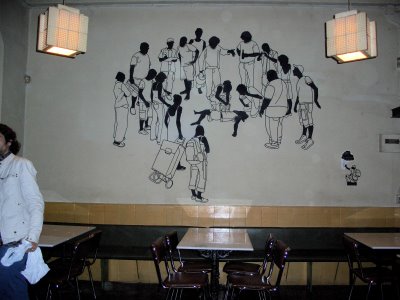
"The Accident", Steel plate and bar, 260 x 210cm, 2006
One of the things I like most about this piece is playing with the point of focus which is the body in the center of the work. The fact that everyone in the piece is staring intently at the prostrate body at the center of the composition draws the viewers attention to it as well hence creating somewhat of a visual drainage point. It also creates the feeling that the viewer has stumbled upon the scene as have the other figures in the work which I hope achieves a level of integration of the viewer in the piece as opposed to passive observer. Above you have the piece in it's current home in Barcelona. The bar is called Sant Pau 68 and happens to be conveniently located at calle Sant Pau 68 in the lovely bohemian bunker of Raval.
 Favela IV, 250cm x 150cm, Steel, 2006
Favela IV, 250cm x 150cm, Steel, 2006 The work in the studio in progress
The work in the studio in progress Some details of the work in progress
Some details of the work in progress 




















